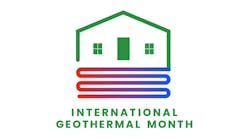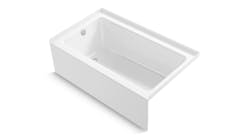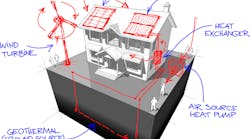Latest from Green
Sponsored
I can still remember the moment, more than a decade gone by now, when then Editor-in-Chief Bob Mader told me, “I want you to do a page of green products this next issue.”
“Sure thing,” I replied.
“And I want you to do it every issue from now on,” he added. “Every issue is the green issue.”
And I said, “No problem,” but inside I was panicking. A full page of green products every issue? I could manage, I thought, four times a year with no problem. Maybe every other issue if I really beat the bushes. But every single issue? I just couldn’t see it happening. I didn’t think there were enough green products out there in the market.
It may seem strange, but there was a time when “green” was this new thing. Not those energy- and water-efficient products themselves (those have been around since forever), but the conscious choice to embrace and promote the technology as a movement within the construction industry. The US Green Building Council was formed in 1993 and the first version of LEED was launched in 1998. The EPA created the WaterSense label in 2006.
By about 2008 the green movement was in full swing. It was even looked upon by some as a fad that would eventually fade away. Or worse, as a marketing gimmick (“greenwashing” they called it) that only suckers from California with too much money to spend would fall for. I mean, didn’t we all decide this was nonsense when Regan took the solar panels off the roof of the White House? (As long as we’re talking solar, check out this month’s feature to see how the Solar Decathlon is coping with this difficult year.)
Now here we are more than a decade later—something like 120 or 130 issues of CONTRACTOR Magazine gone by—and there has been a page of green products every month. In fact, I’ve been thinking of discontinuing the green products page, not because there aren’t enough products to fill it, but because the marketplace has outgrown the category. Everyone is designing with water and energy efficiency in mind now. And not just individual products or systems, but entire buildings, entire cities.
And why wouldn’t you? Even if you’re not a conservationist at heart every BTU, every kilowatt-hour, every drop of water wasted is money wasted. Who doesn’t want to save their customers money? Who doesn’t want to sell themselves as the expert who can deliver those kinds of dramatic savings?
If the up-front costs seem daunting (and yes, condensing boilers, variable-speed pumps and geothermal wells don’t come cheap) there are all kinds of federal, state and local rebates to help offset those costs. In the meanwhile, the price of high-efficiency technology seems to keep dropping every year.
But the expertise needed to design, install and maintain green products and systems is only going to be in higher and higher demand. The Federal government may have backed out of the Paris Climate Agreement, but 23 states have committed to meet the goals of the accord and they’re going to need to find those energy savings wherever they can. (You can read about a geothermal installation that might have a big influence in the North East in our cover case study.)
Actually, I think I’ll keep the green products page. It may be a bit dated, but “green” still has a lot of unrealized potential.
Steve Spaulding | Editor-inChief - CONTRACTOR
Steve Spaulding is Editor-in-Chief for CONTRACTOR Magazine. He has been with the magazine since 1996, and has contributed to Radiant Living, NATE Magazine, and other Endeavor Media properties.


